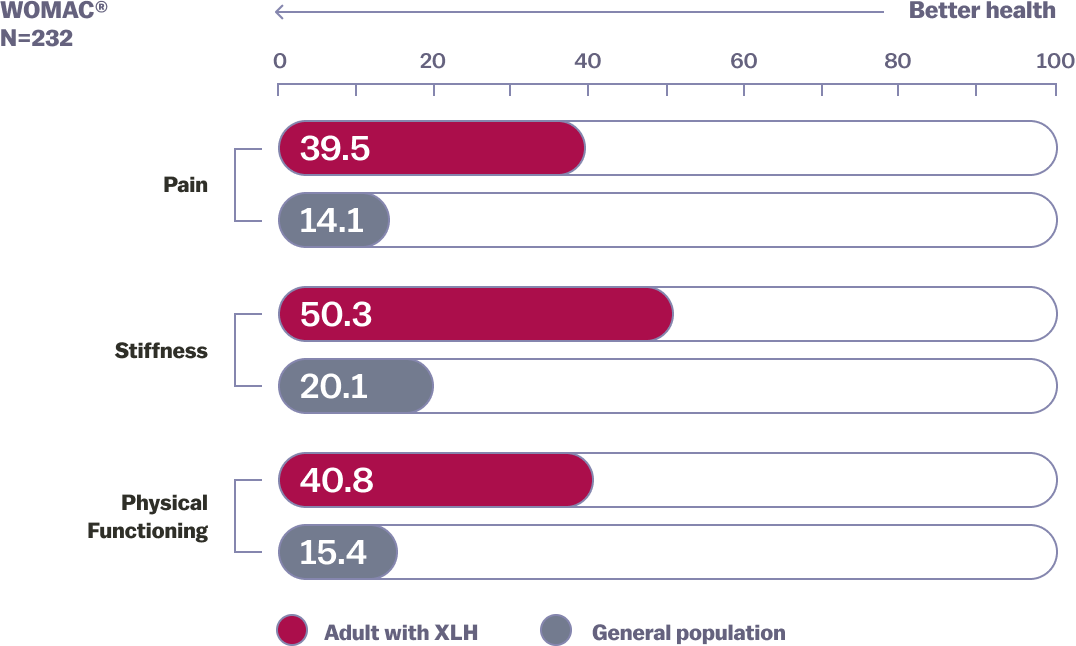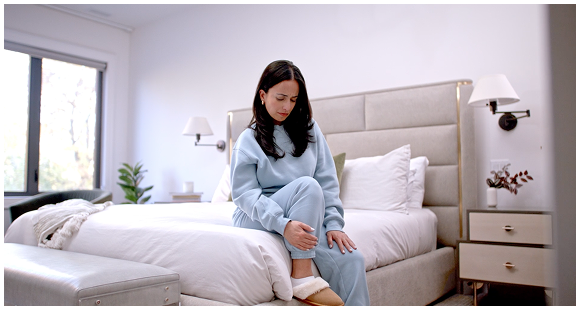Effects on patient-reported outcomes†
Adults with XLH experienced more pain and stiffness compared to the general population.2
Experience of pain may be exacerbated by the development of painful extraosseous calcifications (spine, Achilles tendon, hips) and osteoarthritis.3
Western Ontario and McMaster Universities Osteoarthritis Index (WOMAC) is a questionnaire designed to assess pain, stiffness, and physical function in patients with hip and/or knee osteoarthritis. It has been used among patients with different conditions, including low back pain, rheumatoid arthritis, juvenile rheumatoid arthritis, systemic lupus erythematosus, and fibromyalgia.4
On average, approximately:2
- 44% of adults with XLH reported having a history of fractures or pseudofractures.
- Among adults reporting a history of fractures or pseudofractures, the mean age of first fracture/ pseudofracture was 26.5 years.
In a 2017 study consisting of 29 adults with XLH:5
- 93% of patients reported difficulties with mobility vs. 14% of the general population.
- 80% of patients with XLH also experienced difficulties in performing daily activities vs. 11% of the general population.
Many patients also suffered from pain, and some adults were unable to walk independently.
In a 2017 survey of 186 adults with XLH, 84% of adults believed that over time, their chronic hypophosphatemia had a greater impact and affected more areas of their lives.1
- In a 2019 survey, the majority of patients reported negative social experiences as a result of their XLH, including bullying and unwanted social attention, that often resulted in low self-esteem, frustration, and depression.6§
Adults with XLH may require long-term MANAGEMENT to prevent further damage from chronic hypophosphatemia. Find out more about diagnosing XLH.

 Français
Français



